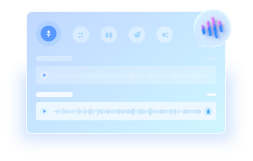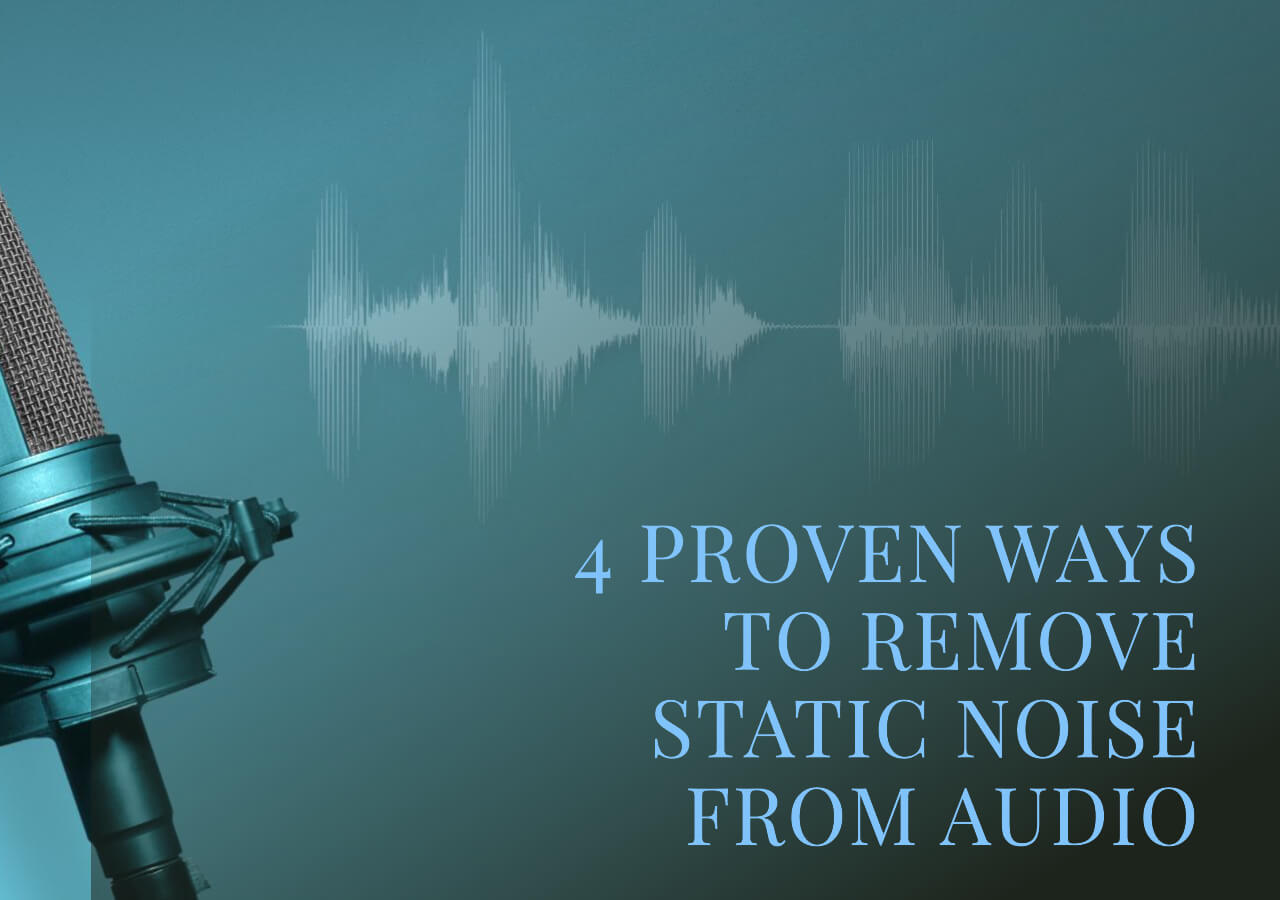-
![]()
Sofia Albert
Sofia has been involved with tech ever since she joined the EaseUS editor team in March 2011 and now she is a senior website editor. She is good at solving various issues, such as video downloading and recording.…Read full bio -
![]()
Alin
Alin is a sophisticated editor for EaseUS in tech blog writing. She is proficient in writing articles related to screen recording, voice changing, and PDF file editing. She also wrote blogs about data recovery, disk partitioning, data backup, etc.…Read full bio -
Jean has been working as a professional website editor for quite a long time. Her articles focus on topics of computer backup, data security tips, data recovery, and disk partitioning. Also, she writes many guides and tutorials on PC hardware & software troubleshooting. She keeps two lovely parrots and likes making vlogs of pets. With experience in video recording and video editing, she starts writing blogs on multimedia topics now.…Read full bio
-
![]()
Gorilla
Gorilla joined EaseUS in 2022. As a smartphone lover, she stays on top of Android unlocking skills and iOS troubleshooting tips. In addition, she also devotes herself to data recovery and transfer issues.…Read full bio -
![]()
Rel
Rel has always maintained a strong curiosity about the computer field and is committed to the research of the most efficient and practical computer problem solutions.…Read full bio -
![]()
Dawn Tang
Dawn Tang is a seasoned professional with a year-long record of crafting informative Backup & Recovery articles. Currently, she's channeling her expertise into the world of video editing software, embodying adaptability and a passion for mastering new digital domains.…Read full bio -
![]()
Sasha
Sasha is a girl who enjoys researching various electronic products and is dedicated to helping readers solve a wide range of technology-related issues. On EaseUS, she excels at providing readers with concise solutions in audio and video editing.…Read full bio
Content
0 Views |
0 min read
PAGE CONTENT:
Are you planning to make music or use a karaoke track for your next vocal or remix? Creating an album without synchronized beats can be a waste of time and resources. This is where feedback can be helpful, as it may point out that the beats are not similar, creating an issue.
You might wonder what BPM means in music and how to find it. However, it sounds like rocket science; continue reading to learn everything in its simplest form.
What Does BPM Mean in Music?
BPM stands for beats per minute in music. Simply put, it specifies the song's speed, also called its tempo. If a song is relatively fast, it will have a high BPM, and vice versa.
Moreover, BPM is the numerical value of a song's speed. Depending upon the genre, the beats per minute vary for music. For instance, romantic melodies have a low BPM, around 60-90, while those of Jazz, Pop, and Rock songs generally go beyond 120 BPM.
When developing music like remixes and similar, BPM plays a vital role. This is because songs with similar BPM are well cohesive with each other. Additionally, DJs play songs of a particular BPM range depending on the event's atmosphere or occasion.
The Most Common BPM in Music
90-99 BPM is most common in music. However, it's noteworthy that this range is not objective but subjective. The latter means that the standard range of BPM varies depending on the genre or type of song.
For example, ballads and jazz have a slow tempo between 60 and 80 BPM. Going on with a little transition, pop, rock, and hip-hop songs have a 90-120 BPM tempo. Electronic dance music, as well as techno and house music, is between 120 and 140 BPM. You would even find popular songs at 125 BPM suitable for running and workout sessions.
Additionally, if you are looking for fast BPM in music, it lies between 140-180 BPM and sometimes more. This is usually music in the drum, bass, hardcore, and punk genres.
How to Find the BPM of an Audio File?
To find the BPM of an audio file, you have to play it and count the number of beats in 15 seconds. Then, multiply the number of beats by 4 to get the BPM. For instance, if you count 25 beats in 15 seconds, the BPM will be 25 × 4, equalling 100 BPM. However, this process is cumbersome and leaves space for inaccuracies. So, using effective third-party tools helps. While efficiency depends upon its algorithm, it becomes difficult to figure out how it works. Hence, do look for the best BPM analyzer for Mac.
It can be challenging to find a trustworthy and effective solution for removing vocals from audio tracks since it depends on the complexity of the algorithm. However, EaseUS Online Vocal Remover is an excellent option for beginners looking for a reliable BPM analyzer. Unlike other online tools, it is simple to use and provides accurate results.
💜Below mentioned are the features of the same:
- Support for multiple file formats
- Feature to eliminate the background noise of songs
- It doesn't require any high-end devices
- Desktop app available for Windows and Mac
- It enables you to change the pitch of YouTube videos also
👇Follow these steps to see how to find the BPM of a song:
Step 1. Go to the website and navigate to the "Key BPM Finder."
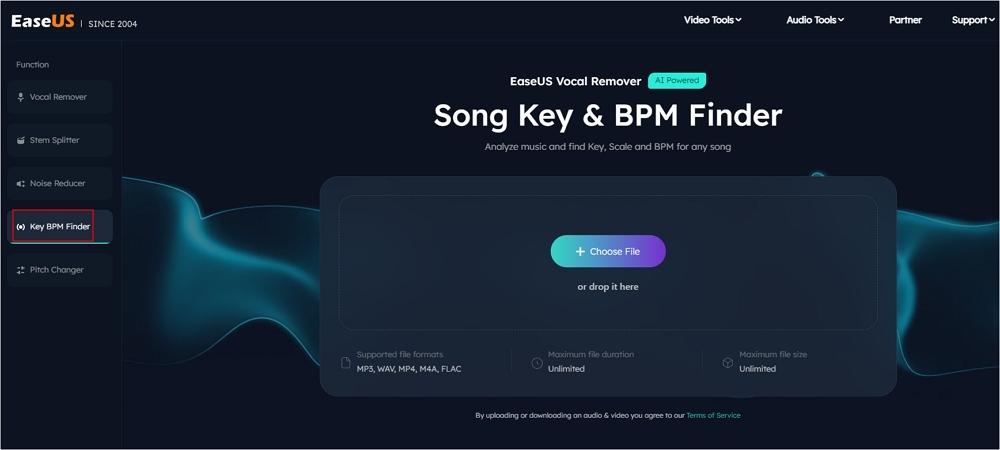
Step 2. Browse the local library or drag and drop the audio here.
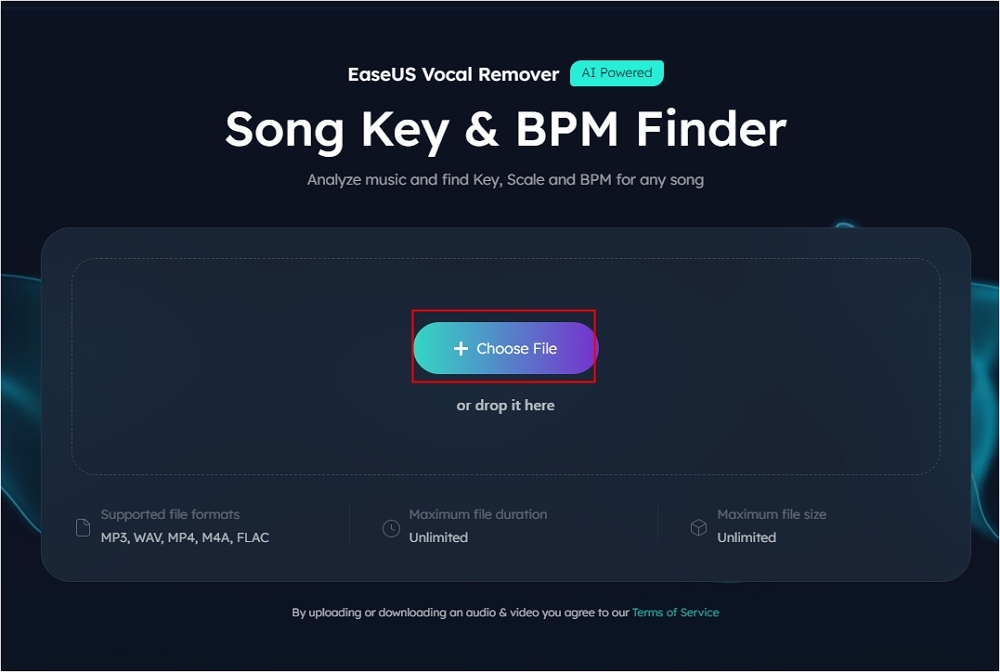
Step 3. The AI will analyze it and show the key of your song. Click "Add Tracks" for multi-tasking. Press "Export .csv File" to keep the record.
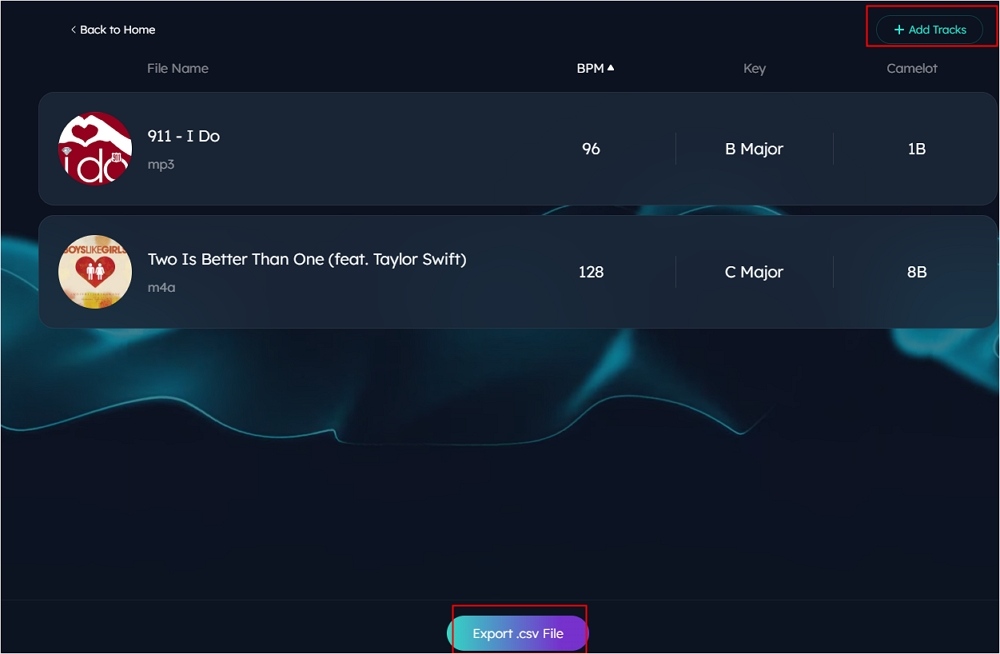
While analyzing it for your chosen song, it's typical for the song not to show the expected BPM. In such cases, you can change the music pitch online, which doesn't affect the quality of the song. More detailed steps of how to find the BPM of a song are shown in the following post:
How to Find the Tempo of a Song [Beginner-Friendly]
For music editors and content creators, it is hard to find the tempo of a song for various tasks like mixing. Read here how to find the tempo of a song by using an effective online tool and app.

In Conclusion
If you were looking for what BPM means in music and how to find it, you would have gotten your answer! BPM refers to Beats Per Minute or tempo in music. It represents the speed of the music.
Determining the BPM (beats per minute) of a musical piece is crucial in creating a cohesive composition. The rhythm of a song or album should be consistent and work in harmony with the melody. The EaseUS Online Vocal Remover is an excellent tool for analyzing BPM effectively. With this tool, you can also adjust the pitch and eliminate unwanted background noises.
So, what stops you from creating the perfect masterpiece? Use EaseUS Online Vocal Remover now for incredible results! You can share this helpful content with your friends on social media:
